Cash flow statement example: Learn how to track your cash

Cash, at its core, is a business’s reality check. You can have the most impressive revenue projections and a balance sheet that makes investors swoon, but if your cash isn’t on the move, your business isn’t growing.
A cash flow statement is the map that tells you where your money is actually going. Whether it’s fueling growth, covering expenses, or mysteriously vanishing into the void of untracked spending.
Unlike income statements and balance sheets, this report answers a more immediate question: Do you have enough money to keep running your business?
A U.S. Bank study showed that 82% of business failures are a result of poor cash flow management. This means understanding how your money moves helps with a business’s survival and growth.
A dedicated statement gives you a clearer picture of your financial health and helps you avoid unpleasant surprises. It also ensures that your future business plans are backed by actual, spendable cash.
This guide will break down all you need to know about cash flow statement.
What is a cash flow statement?
A cash flow statement is a financial report that tracks how cash moves in and out of your business over a specific period. It breaks down cash transactions into three essential categories:
- Operating activities – Money earned from sales and spent on daily business expenses, like payroll and rent.
- Investing activities – Money used for buying or selling long-term assets, such as equipment or real estate.
- Financing activities – Cash transactions related to loans, investments, and shareholder dividends.
Analyzing these sections lets businesses understand their cash liquidity. It also helps to avoid running out of funds and make better financial decisions.
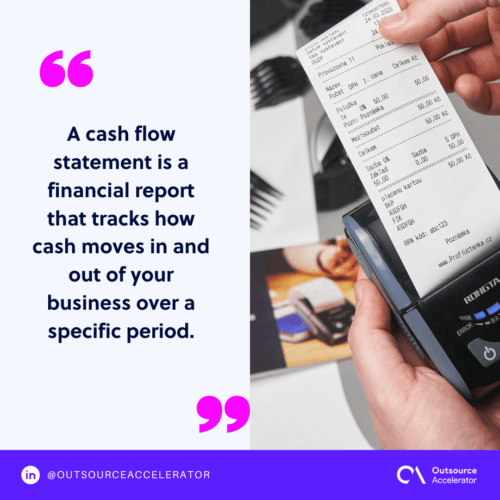
Cash flow statement vs. Balance sheet
A balance sheet is a snapshot of a company’s financial position at a single point in time. It tells you what a business owns (assets), what it owes (liabilities), and what’s left over (equity). It doesn’t tell you how cash moves within the business.
A cash flow statement, on the other hand, shows the actual movement of money. It helps answer questions like, “Do we have enough cash to pay suppliers this month?” and “Why do we seem profitable but struggle to pay our bills?”
Cash flow statement vs. Income statement
An income statement (or profit and loss statement) tracks revenue and expenses to determine profitability.
However, it includes non-cash items like depreciation and accounts receivable, which don’t reflect actual cash movement.
A cash flow statement focuses only on real cash transactions. This makes it a better tool for understanding a business’s immediate financial position.
Why do you need a cash flow statement?
Cash flow statements matter because, when it comes down to it, businesses run on cash – not just its human capital and profits on paper.
Here’s why they’re essential:
- They prevent cash shortages. A healthy cash flow ensures that businesses can cover payroll, rent, and operating expenses without scrambling for loans.
- They support better financial decisions. Knowing your cash position helps you decide when to expand, cut costs, or seek additional funding.
- They help detect financial problems early. A cash flow statement reveals warning signs like slow customer payments or rising expenses before they spiral out of control.
- They build investor confidence. Investors and lenders rely on these statements to gauge a business’s financial stability before making commitments. It’s especially important as recent research revealed how important investor sentiment is to a business’ market activities and standing.
- They improve long-term planning. Tracking how money moves over time helps businesses identify seasonal trends, plan for growth, and make sure they have enough reserves for slower periods.
How to prepare a cash flow statement
There are two ways to write a cash flow report: the direct method and the indirect method. Both arrive at the same final cash balance but take different paths to get there:
Direct cash flow method
The direct method records cash transactions as they happen. It lists money received from customers and payments made for expenses.
This method provides a clear, real-time picture of cash movement. It’s also more transparent but requires meticulous record-keeping.
Example:
- Cash received from customers: $100,000
- Cash paid to suppliers: -$40,000
- Cash paid for salaries: -$30,000
- Net cash flow from operations: $30,000
Indirect cash flow method
The indirect method starts with net income from the income statement and adjusts for non-cash transactions and changes in working capital.
It’s the more commonly used type because it connects directly to other financial statements.
Example:
- Net income: $50,000
- Depreciation: +$5,000
- Increase in accounts receivable: -$10,000
- Increase in accounts payable: +$5,000
- Net cash flow from operations: $50,000
Example of a cash flow statement
Here’s a simplified cash flow statement example for a business over one quarter using the indirect method:
| Cash Flow Statement XYZ Company Q3 20XX | ||
| Category | Description | Amount ($) |
| Cash Flow from Operations | Sales revenue cash received | 1,500,000 |
| Accounts payable decreased | 13,000 | |
| Cash paid to vendors | (285,000) | |
| Accounts payable increase | 11,000 | |
| Salaries | (24,000) | |
| Rent | (37,000) | |
| Office supplies | (1,000) | |
| Marketing | (69,000) | |
| Sales commissions | (225,000) | |
| Shipping and fulfillment | 15,000 | |
| Total Cash Flow from Operations | 876,000 | |
| Cash Flow from Investing | Purchase of new equipment | (50,000) |
| Sale of old equipment | 20,000 | |
| Investment in other businesses | (30,000) | |
| Total Cash Flow from Investing | (60,000) | |
| Cash Flow from Financing | Interest paid on loan | (5,000) |
| Interest collected from customer accounts | 200 | |
| New loan received | 50,000 | |
| Total Cash Flow from Financing | 45,200 | |
| Cash Flow from Taxes | Income tax paid | (4,000) |
| Total Cash Flow from Taxes | (4,000) | |
| Total Cash Flow for Q3 | 857,200 | |
In this report for XYZ Company, we see how money moved in and out of the business over one quarter.
- The company earned $1,500,000 from sales and had various operating expenses like salaries, rent, and marketing.
After accounting for all operating activities, the company had $876,000 in net cash from operations — a strong indicator of positive cash flow.
- Under investing activities, the company spent $50,000 on new equipment but recovered $20,000 from selling old equipment, leaving a net cash outflow of $60,000 in this section.
- In financing activities, the company took out a $50,000 loan while making loan interest payments of $5,000. This resulted in $45,200 in net cash from financing.
- Finally, the company paid $4,000 in taxes.
After combining all sections, XYZ Company ended the quarter with a positive cash flow of $857,200. This means it brought in more cash than it spent — an overall healthy financial position.
How to spot red flags in your cash flow statement
Your cash flow statement can also be used as a diagnostic tool. Here are some warning signs to watch for to determine whether your company is in good financial health:
- Consistently negative cash flow from operations – If your business is bringing in revenue but losing cash, it could signal late customer payments or excessive spending.
- Overreliance on financing – If most of your cash inflow comes from loans rather than business operations, it may indicate a sustainability problem.
- Large capital expenditures with low reserves – Investing in assets is good, but draining cash reserves to do so can create liquidity issues.
- Delays in paying suppliers – If you’re frequently pushing back payments, your cash flow may be tighter than it appears.
- High accounts receivable with slow collections – If customers take too long to pay invoices, your business might struggle to cover short-term expenses, even if profits look strong on paper.
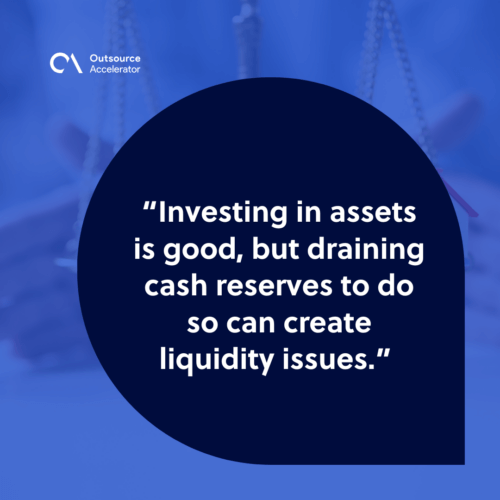
Making the most out of your cash flow statement
Now you know that a cash flow statement isn’t just for accountants. Businesses can use it as a tool to make smarter decisions. It strips away optimism, ignores best-case scenarios, and tells you exactly where your business stands.
Understanding it means you can spot opportunities before they pass you by and recognize financial trouble while there’s still time to fix it.
Beyond just tracking money, your statement should shape how your organization operates.
Are you relying too much on borrowed money? Are slow-paying customers quietly suffocating your operations? Do you have enough cash reserves to take advantage of a sudden opportunity?
You can use this report to your advantage by:
- Speeding up receivables – Encourage customers to pay faster by offering early payment discounts or tightening credit terms.
- Controlling spending – Regularly review expenses and eliminate unnecessary costs.
- Planning for seasonality – If your business has seasonal dips, use past cash flow data to prepare for leaner months.
- Building a cash reserve – Set aside emergency money to protect against unexpected expenses or downturns.
More importantly, a cash flow statement reminds you that profitability on paper isn’t the same as financial health.
Many businesses collapse despite strong sales simply because they run out of liquid cash. You set yourself up for long-term stability by using cash flow projections, maintaining a financial cushion, and making investment decisions based on real numbers.
At the end of the day, businesses don’t fail because they aren’t profitable. They fail because they can’t pay their bills.
Master your cash flow, and you won’t just understand your business better, you’ll control its future.

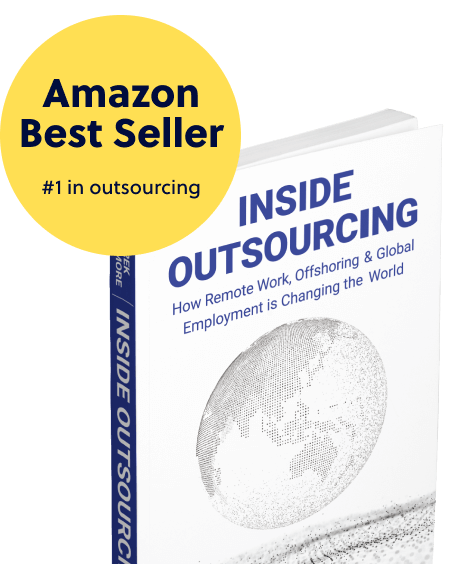


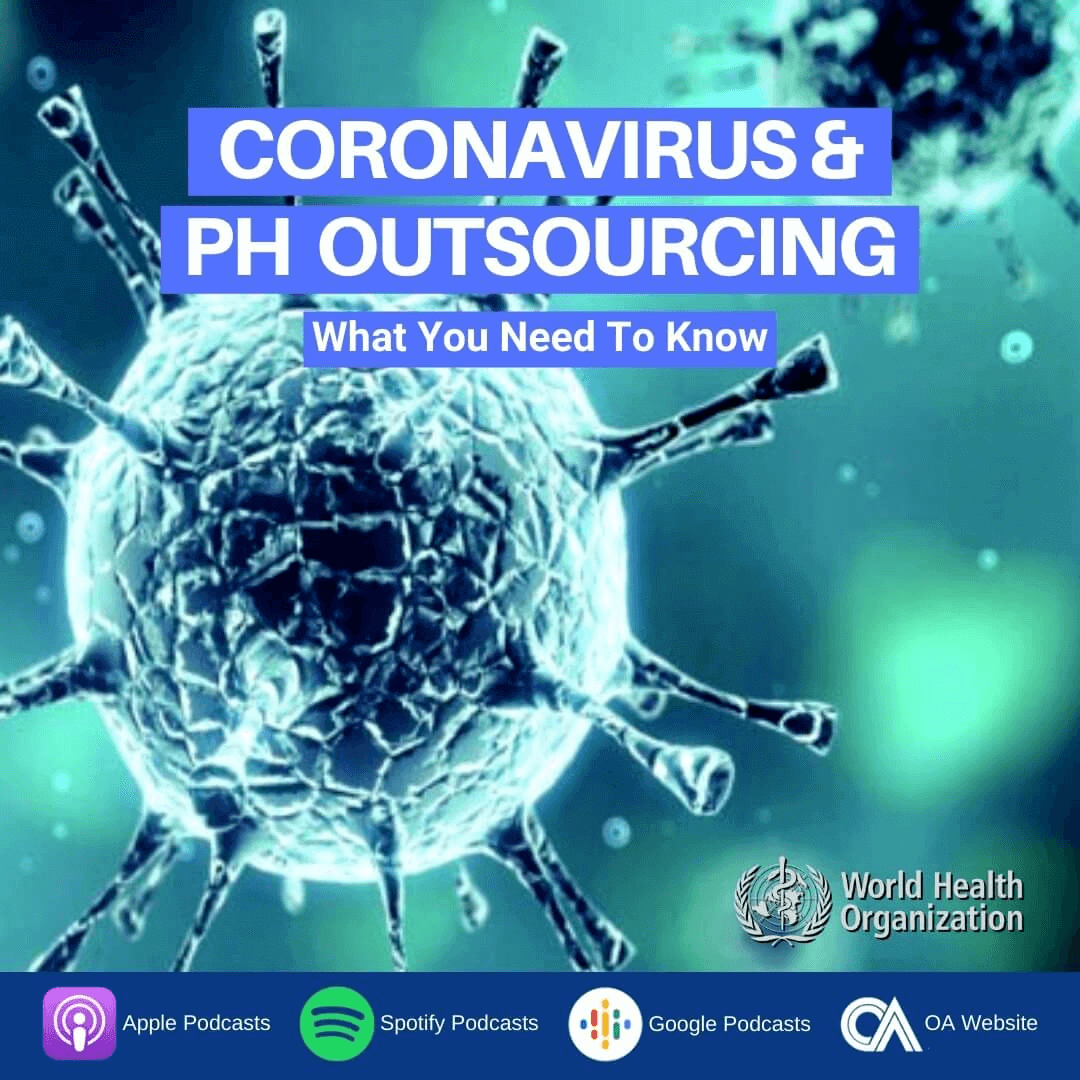
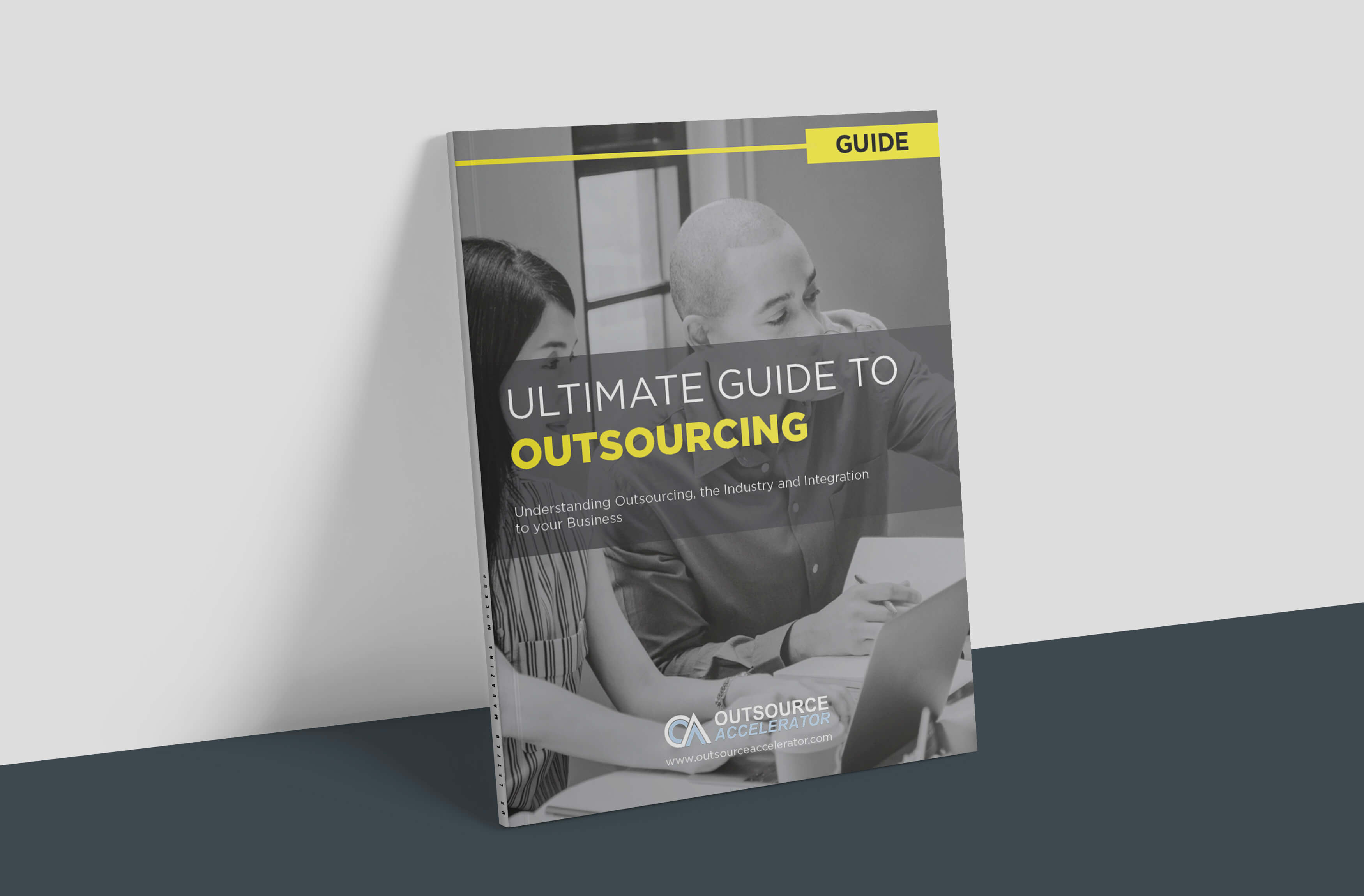

 Independent
Independent




